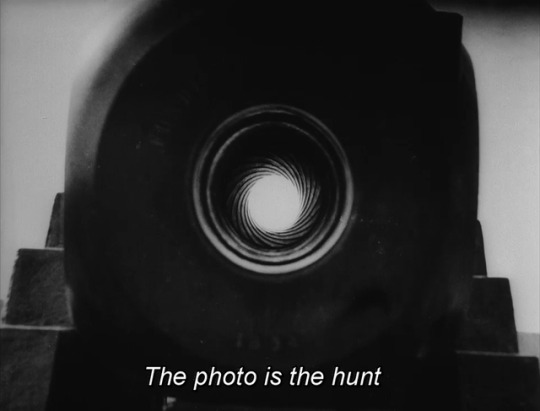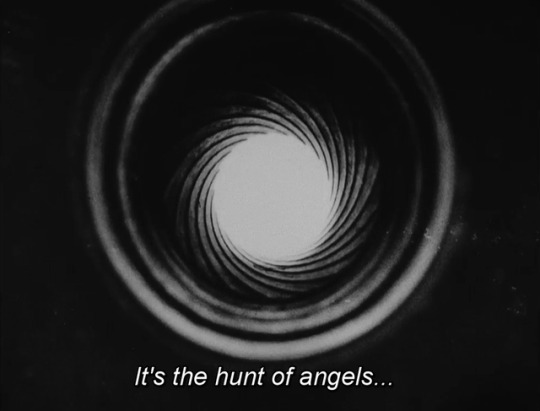Don't wanna be here? Send us removal request.
Link
2 notes
·
View notes
Link
0 notes
Photo





If I Had Four Dromedaries (Chris Marker, 1966)
34K notes
·
View notes
Link
0 notes
Photo








We Still Don’t Understand Why Time Only Flows Forward
“It’s true that entropy does explain the arrow of time for a number of phenomena, including why coffee and milk mix but don’t unmix, why ice melts into a warm drink but never spontaneously arises along with a warm beverage from a cool drink, and why a cooked scrambled egg never resolves back into an uncooked, separated albumen and yolk. In all of these cases, an initially lower-entropy state (with more available, capable-of-doing-work energy) has moved into a higher-entropy (and lower available energy) state as time has moved forwards. There are plenty of examples of this in nature, including of a room filled with molecules: one side full of cold, slow-moving molecules and the other full of hot, fast-moving ones. Simply give it time, and the room will be fully mixed with intermediate-energy particles, representing a large increase in entropy and an irreversible reaction.”
Why does time flow forwards and not backwards, in 100% of cases, if the laws of physics are completely time-symmetric? From Newton’s laws to Einstein’s relativity, from Maxwell’s equations to the Schrödinger equation, the laws of physics don’t have a preferred direction. Except, that is, for one: the second law of thermodynamics. Any closed system that we look at sees its entropy only increase, never decrease. Could this thermodynamic arrow of time be responsible for what we perceive as the forward motion of time? Interestingly enough, there’s an experiment we can perform: isolate a system and perform enough external work on it to force the entropy inside to *decrease*, an “unnatural” progression of entropy. What happens to time, then? Does it still run forward?
Find out the answer, and learn whether thermodynamics has anything to do with the passage of time or not!
97 notes
·
View notes
Quote
Come, let us find a cottage, love, That's green for half a mile around; To laugh at every grumbling bee, Whose sweetest blossom's not yet found. Where many a bird shall sing for you, And in your garden build its nest: They'll sing for you as though their eggs Were lying in your breast, My love-- Were lying warm in your soft breast. 'Tis strange how men find time to hate, When life is all too short for love; But we, away from our own kind, A different life can live and prove. And early on a summer's morn, As I go walking out with you, We'll help the sun with our warm breath To clear away the dew, My love, To clear away the morning dew.
William Henry Davies
0 notes
Photo

Octopuses are older than dinosaurs. Source Source 2 Source 3
3K notes
·
View notes
Link
10 notes
·
View notes
Quote
I had an inheritance from my father, it was the moon and the sun. And though I roam all over the world, the spending of it's never done.
Ernest Hemingway For Whom the Bell Tolls
0 notes
Photo

Death and Life has two very clearly separated parts. To the left, we see Death. Death is depicted and the classic grim reaper, a grinning skull, covered in a dark robe covered with symbols. The main symbol we see covering Death is that of the cross. To the right we see life. We see a number of young women lying on a flower bed. We have seen similar flower beds before, e.g. in The Kiss We see a newly created life, a baby, lying in their arms. We see a muscular man holding one of the women and we see an older woman also lying in the middle of the group. The depiction thus covers people, young and old, with a focus on the adults in their best age. There is an over representation of women in the painting which could refer to women as the source of all life. It could also reflect Klimt’s preference for depiction women, preferably somewhat undressed. All the subjects are somewhat covered by cloth bearing numerous symbols. The composition and execution is thus typical Klimt, with symbols taking a center stage. Only pure colors are used in this paintings, and Gustav Klimt sculpted the figures in his canvase in soft rounded contours. An aging, tired master, Among the master pieces of Gustav Klimt, Death and Life won the first price at the world exhibition in Rome in 1911
https://www.gustav-klimt.com/Death-And-Life.jsp
2 notes
·
View notes
Link
0 notes
Link
7 notes
·
View notes



